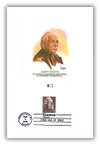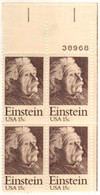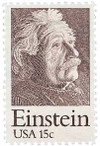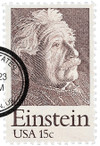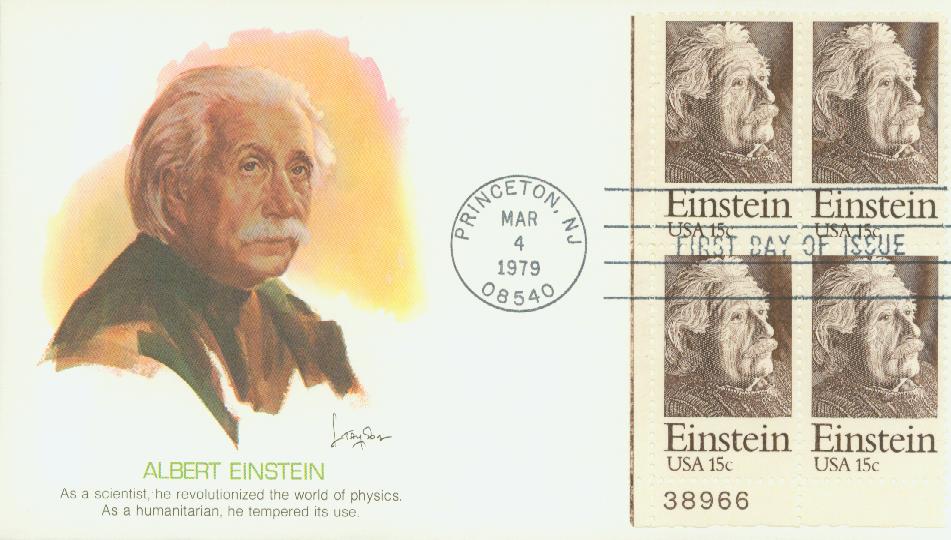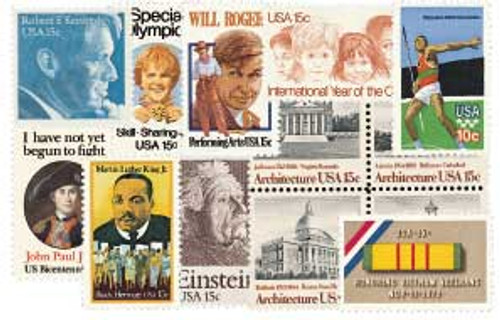
# 1774 - 1979 15c Albert Einstein
1979 15¢ Albert Einstein
City: Princeton, New Jersey
Quantity: 157,310,000
Birth Of Albert Einstein
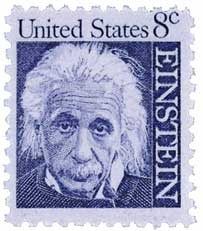
One of the greatest scientific minds in human history, Albert Einstein was born on March 14, 1879, in Ulm, Württemberg, Germany.
Einstein’s family moved to Munich in 1880 and he would spend most of his childhood there. He attended the Luitpold Gymnasium (now called the Albert Einstein Gymnasium) before moving with his family to Italy.
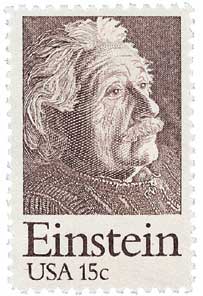
Einstein had natural understanding of math from an early age and was often far ahead of other children his age – he even surpassed his tutor. He taught himself algebra and Euclidean geometry in a summer and developed his own proof of the Pythagorean theorem when he was 12. Einstein became convinced that all of nature could be understood as a “mathematical structure.”
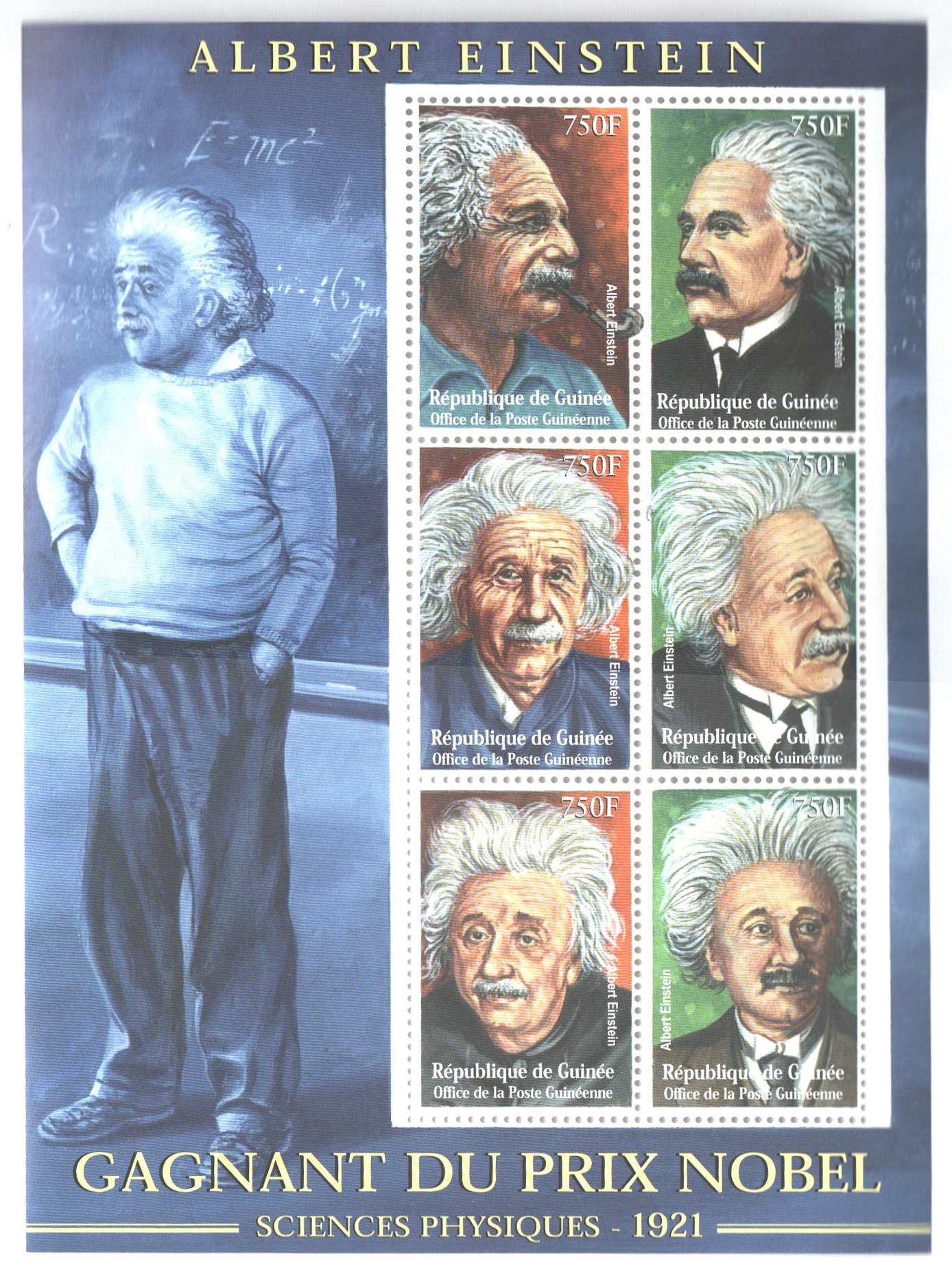
Einstein went on to study physics and mathematics at the Swiss Federal Polytechnic School in Zurich. After earning his degree in 1901, he earned Swiss citizenship. However, he was unable to find a teaching job and instead took a job as a technical assistant in the Swiss Patent Office. While this job wasn’t in his field, it gave him ample time to research and produce some of his most prolific work.
In 1905, Einstein was awarded his PhD from the University of Zurich. That same year, called his annus mirabilis (miracle year), he published four papers in the journal Annalen der Physik (Annals of Physics). The first three of these introduced the scientific community to the photoelectric effect, expanded on the kinetic theory of heat, and formed the basis of his theory of relativity.
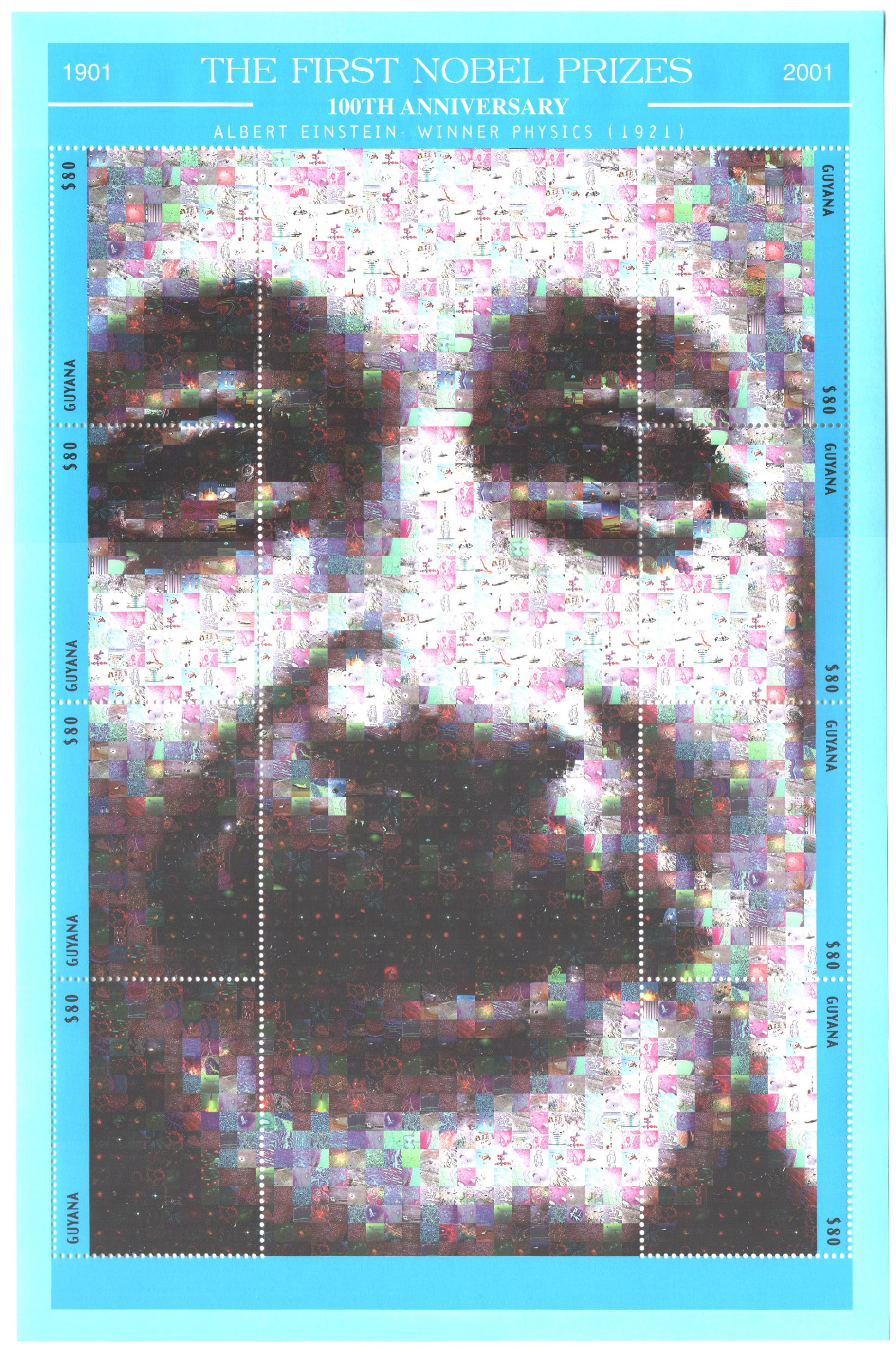
On November 21, Einstein published his final paper of the year, “Does the Inertia of a Body Depend Upon Its Energy Content?” This paper introduced the formula E = mc2. According to the formula, the energy of a body at rest (E) is equal to its mass (m) multiplied by the speed of light (c) squared. Many of Einstein’s miracle year theories were controversial for years before they were accepted by leading physicists. This equation in particular enabled developments as diverse as the atom bomb, diagnostic P.E.T. scans, and smoke detectors. Over time, Einstein’s ideas became widely accepted.
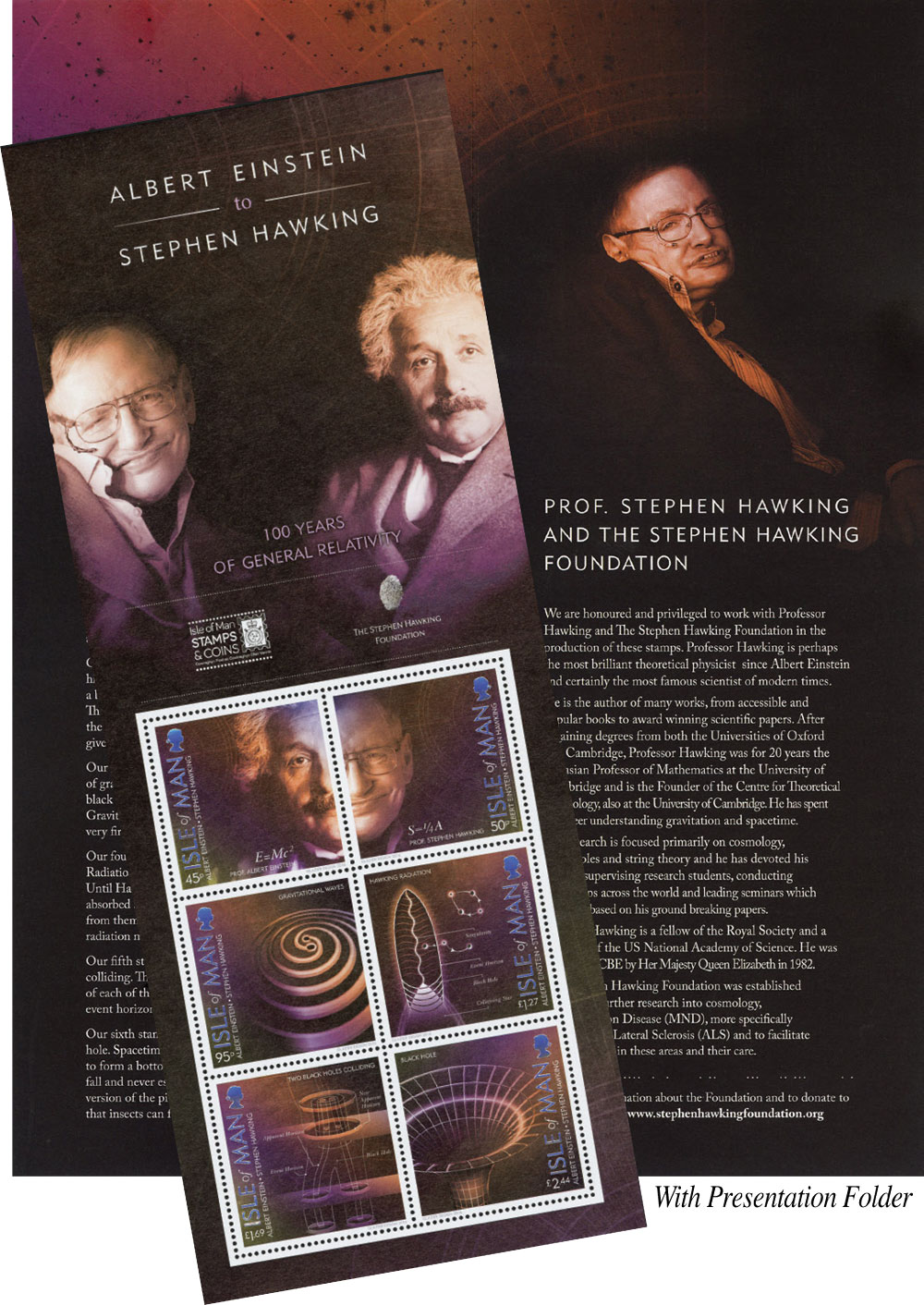
Einstein went on to teach at universities in Zurich and Berlin. He then received the Nobel Prize in Physics in 1921 for his work with the photoelectric effect. In 1933 he traveled to the US to teach Theoretical Physics at Princeton. While in America, the Nazis seized all of his possessions in Germany. He knew he couldn’t return, so he officially renounced his German citizenship and became an American citizen in 1940.
In 1939, as the world war continued to spread across the globe, a number of scientists including Einstein grew concerned over Germany’s goal to build an atomic weapon. Believing they were close to succeeding, these scientists sent a letter to President Franklin Roosevelt, voicing their concern. From this letter, the Manhattan Project was born. Einstein wasn’t allowed to participate, and the scientists involved were not permitted to discuss it with him because officials considered him a security risk. Einstein’s equation, E=mc2, explained how the energy of an atomic bomb was released, though it didn’t detail how to build one.
When asked about his role, Einstein said he didn’t consider himself the father of atomic energy and that his part was “quite indirect.” He also admitted that had he known the Germans wouldn’t succeed in building an atomic bomb, he never would have written the letter to President Roosevelt initiating the Manhattan Project.
After World War II, Einstein was one of the leading figures in the World Government Movement. He was offered the presidency of the state of Israel, but declined. Einstein then helped establish the Hebrew University of Jerusalem.
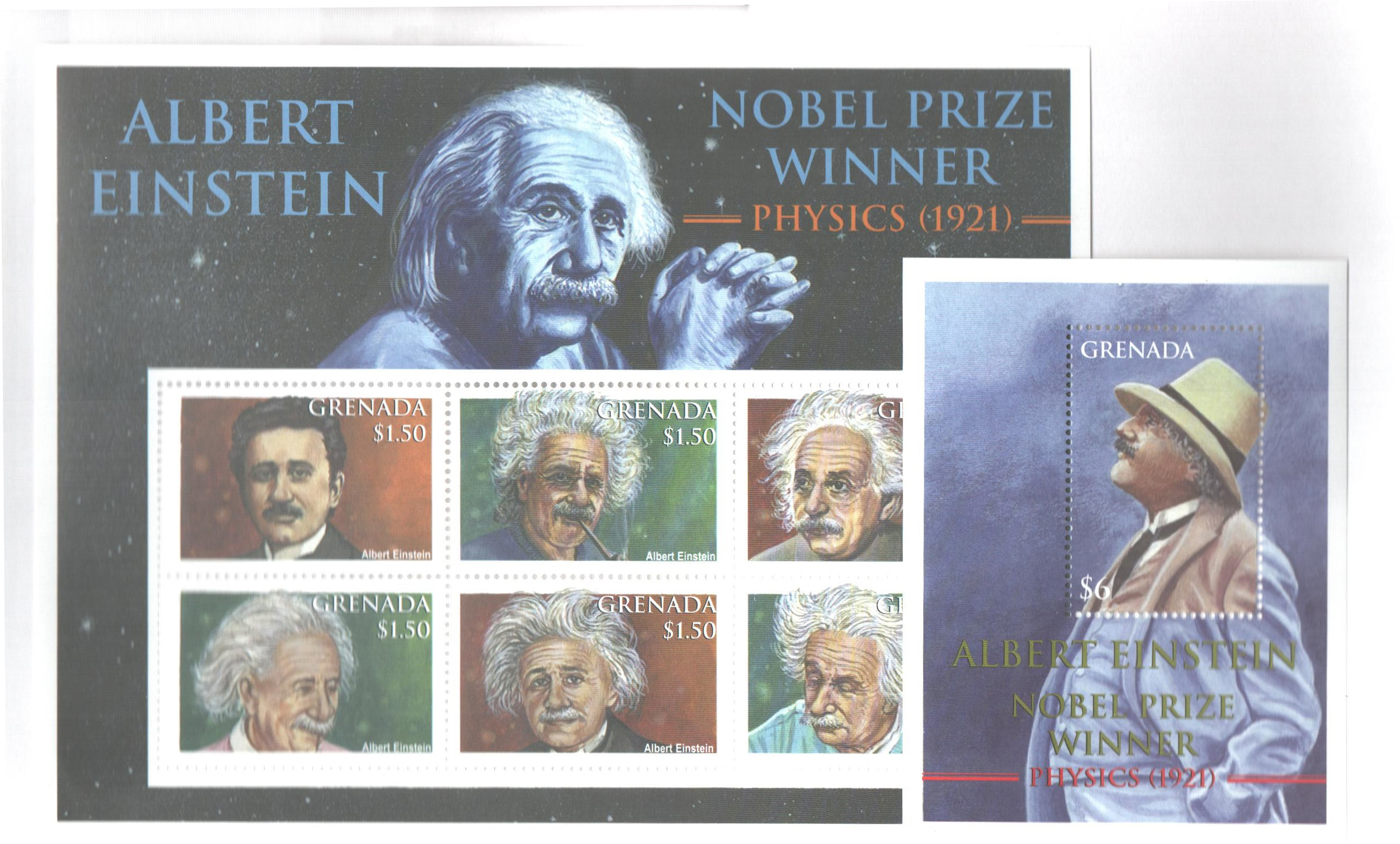
In 1955, Einstein suffered from internal bleeding from a ruptured abdominal aortic aneurysm. He went to the hospital, but refused surgery, claiming, “I want to go when I want. It is tasteless to prolong life artificially. I have done my share; it is time to go. I will do it elegantly.” He died the following day, April 18, at the age of 76.
1979 15¢ Albert Einstein
City: Princeton, New Jersey
Quantity: 157,310,000
Birth Of Albert Einstein

One of the greatest scientific minds in human history, Albert Einstein was born on March 14, 1879, in Ulm, Württemberg, Germany.
Einstein’s family moved to Munich in 1880 and he would spend most of his childhood there. He attended the Luitpold Gymnasium (now called the Albert Einstein Gymnasium) before moving with his family to Italy.

Einstein had natural understanding of math from an early age and was often far ahead of other children his age – he even surpassed his tutor. He taught himself algebra and Euclidean geometry in a summer and developed his own proof of the Pythagorean theorem when he was 12. Einstein became convinced that all of nature could be understood as a “mathematical structure.”

Einstein went on to study physics and mathematics at the Swiss Federal Polytechnic School in Zurich. After earning his degree in 1901, he earned Swiss citizenship. However, he was unable to find a teaching job and instead took a job as a technical assistant in the Swiss Patent Office. While this job wasn’t in his field, it gave him ample time to research and produce some of his most prolific work.
In 1905, Einstein was awarded his PhD from the University of Zurich. That same year, called his annus mirabilis (miracle year), he published four papers in the journal Annalen der Physik (Annals of Physics). The first three of these introduced the scientific community to the photoelectric effect, expanded on the kinetic theory of heat, and formed the basis of his theory of relativity.

On November 21, Einstein published his final paper of the year, “Does the Inertia of a Body Depend Upon Its Energy Content?” This paper introduced the formula E = mc2. According to the formula, the energy of a body at rest (E) is equal to its mass (m) multiplied by the speed of light (c) squared. Many of Einstein’s miracle year theories were controversial for years before they were accepted by leading physicists. This equation in particular enabled developments as diverse as the atom bomb, diagnostic P.E.T. scans, and smoke detectors. Over time, Einstein’s ideas became widely accepted.

Einstein went on to teach at universities in Zurich and Berlin. He then received the Nobel Prize in Physics in 1921 for his work with the photoelectric effect. In 1933 he traveled to the US to teach Theoretical Physics at Princeton. While in America, the Nazis seized all of his possessions in Germany. He knew he couldn’t return, so he officially renounced his German citizenship and became an American citizen in 1940.
In 1939, as the world war continued to spread across the globe, a number of scientists including Einstein grew concerned over Germany’s goal to build an atomic weapon. Believing they were close to succeeding, these scientists sent a letter to President Franklin Roosevelt, voicing their concern. From this letter, the Manhattan Project was born. Einstein wasn’t allowed to participate, and the scientists involved were not permitted to discuss it with him because officials considered him a security risk. Einstein’s equation, E=mc2, explained how the energy of an atomic bomb was released, though it didn’t detail how to build one.
When asked about his role, Einstein said he didn’t consider himself the father of atomic energy and that his part was “quite indirect.” He also admitted that had he known the Germans wouldn’t succeed in building an atomic bomb, he never would have written the letter to President Roosevelt initiating the Manhattan Project.
After World War II, Einstein was one of the leading figures in the World Government Movement. He was offered the presidency of the state of Israel, but declined. Einstein then helped establish the Hebrew University of Jerusalem.

In 1955, Einstein suffered from internal bleeding from a ruptured abdominal aortic aneurysm. He went to the hospital, but refused surgery, claiming, “I want to go when I want. It is tasteless to prolong life artificially. I have done my share; it is time to go. I will do it elegantly.” He died the following day, April 18, at the age of 76.






